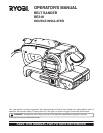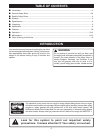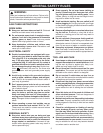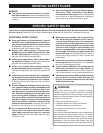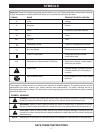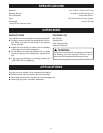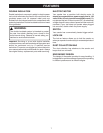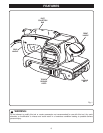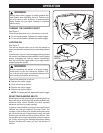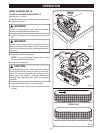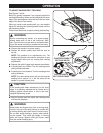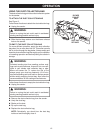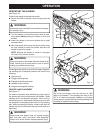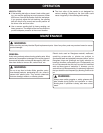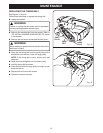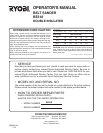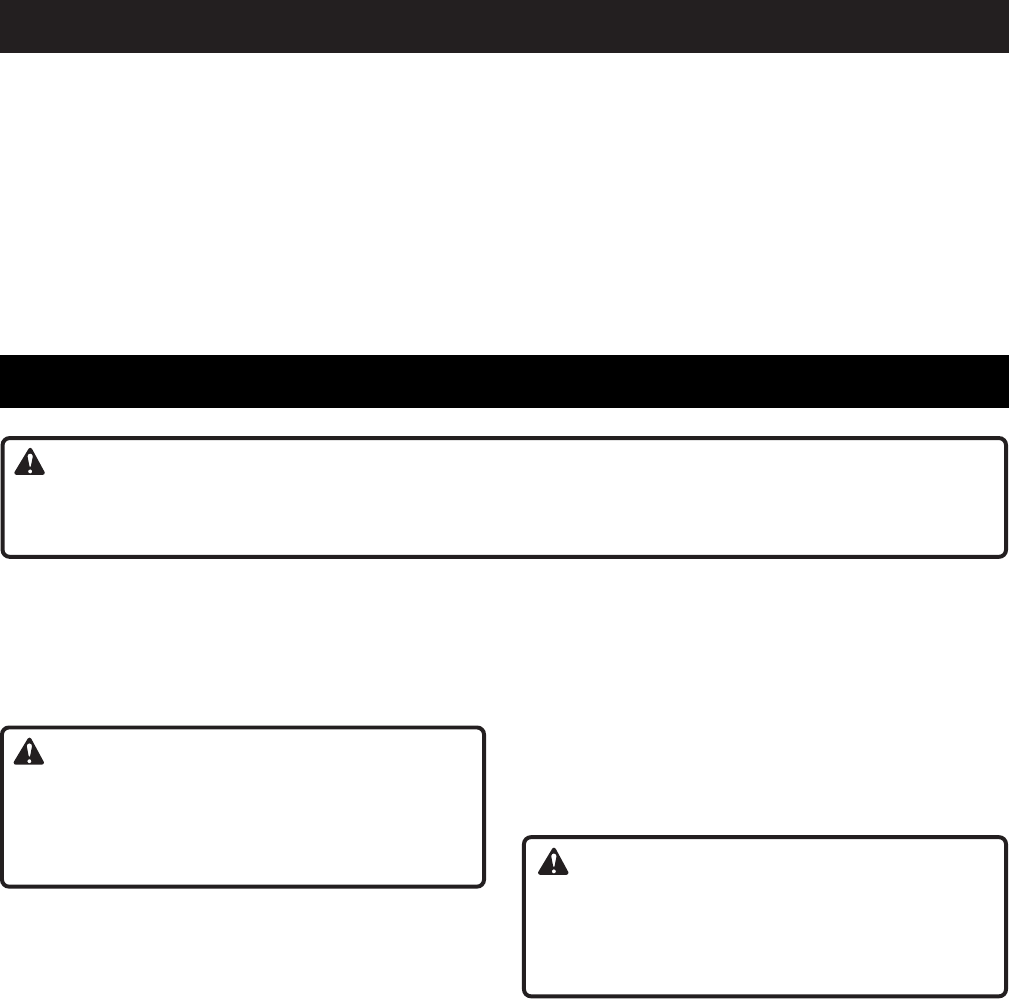
14
OPERATION
WARNING:
When servicing use only identical Ryobi replacement parts. Use of any other parts may create a hazard or cause
product damage.
GENERAL
Avoid using solvents when cleaning plastic parts. Most
plastics are susceptible to damage from various types of
commercial solvents and may be damaged by their use.
Use clean cloths to remove dirt, carbon dust, etc.
WARNING:
Do not at any time let brake fluids, gasoline, petro-
leum-based products, penetrating oils, etc. come in
contact with plastic parts. They contain chemicals
that can damage, weaken, or destroy plastic.
MAINTENANCE
Electric tools used on fiberglass material, wallboard,
spackling compounds, or plaster are subject to
accelerated wear and possible premature failure, as the
fiberglass chips and grindings are highly abrasive to
bearings, brushes, commutators, etc. Consequently, we
do not recommend that this tool be used for extended
work on these types of materials. If, however, you do
work with any of these materials, it is extremely important
that you clean the tool frequently by blowing it with an air
jet.
WARNING:
Always wear safety goggles or safety glasses with
side shields during power tool operation or when
blowing dust. If operation is dusty, also wear a dust
mask.
HELPFUL TIPS
If the sanding belt slips or doesn’t track while sand-
ing, you may be applying too much pressure. When
this occurs, remove the sander from the workpiece.
If you properly adjust the belt tracking, the sanding
belt will return to its normal and correct position on
the driver roller and front roller.
Use a coarser sanding belt for heavy sanding, not
heavy pressure. The weight of the tool is sufficient to
provide adequate pressure at the correct location.
The front roller of the sander is not designed for
contour sanding. Sanding on the front roller could
cause irregularity in the sanding belt tracking.



